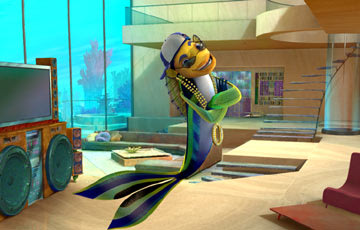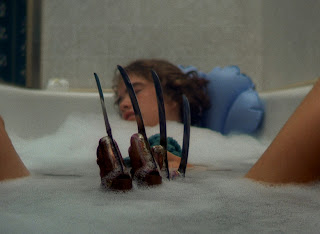Critics
and audiences have for years been wondering why Hollywood keeps churning out so
many sequels, prequels, remakes, and movies that just seem to be the same? More
and more movies seem to have the same tired plotlines, the same stereotype
characters, and the same clichés. I remember watching the preview for Avatar. From those two minutes, I
figured out the entire movie: the conflict, the character motivations, the
so-called twist at the ending. The only thing I was missing was three hours of
special effects and a terrible wannabe Celine Dion song at the end.
2011
broke the record with 27 sequels, prequels, and remakes: Cars
2, Diary of a Wimpy Kid 2: Rodrick Rules, The Hangover Part II, Happy Feet 2,
Hoodwinked Too! Hood Vs. Evil, Johnny English Reborn, Kung Fu Panda 2, Piranha
3D, Sherlock Holmes: A Game of Shadows, Alvin
and The Chipmunks: Chipwrecked, Big Momma’s House: Like Father, Like Son,
Madea’s Big Happy Family, Paranormal Activity 3, Transformers: Dark of
the Moon, Mission: Impossible - Ghost Protocol, Pirates of the Caribbean: On
Stranger Tides, Scream 4, Spy Kids 4: All The Time in the World, The
Twilight Saga: Breaking Dawn (Part One), Fast Five, Final Destination 5, Puss
in Boots, X-Men: First Class, Winnie the Pooh, The Muppets, Rise
of the Planet of the Apes, and
Harry Potter and the Deathly Hallows (Part Two).
This isn’t a new phenomenon, of course. Halloween started out as an independent
film on a tiny budget but now has ten films to its name; A Nightmare on Elm Street has eight sequels; Friday the 13th has eleven sequels; and The Land Before Time has twelve sequels,
two sing-a-longs, and a TV series. Remember when Disney was relying on Pixar to
make decent movies and had somehow fallen from the greatest American animation
studio to an assembly line of direct-to-video sequels? Who was really
clambering for Lady and the Tramp 2:
Scamp’s Adventure or a sequel to The
Fox and the Hound? If Disney had taken all the time and money put into
those sequels and channeled it into a project like Aladdin or The Lion King,
they could have really made something to be proud of. So why didn’t they?
Why don’t we have more movies like Inception, Fantasia, or Eternal Sunshine
of the Spotless Mind? Doesn’t the movie industry value creativity anymore?
What happened to originality?
Well, originality is still in Hollywood. It’s
just very hard to find. Movie audiences have an idealized fantasy of how movies
are really made. Many people think there’s a writer working for years on a
perfect screenplay. He’s working two minimal wage jobs in the day and he comes
home and works through the night on his dream. He pitches it to a movie studio
and instantly, they recognize its genius and pay him $10 million for it, a
director falls in love with the script, actors want a part of it, the studio
gives them $200 million and they go off and make a great movie.
That does happen but it’s extremely rare. While
everyone in the movie industry wants to regard their work as art, when all is
said and done, a movie is a commodity. It has to make more money than it cost
to make in order for it to be successful. Like any commodity, it comes down to
demographics. In reality, the idea for movies mostly comes from the producers.
“We need an action movie that’s going to mimic the style of all the movies with
that gritty, realistic shaky-cam work to appeal to the 15-30 male demographic,
but we should add in a love story for the women.” The writer gets to work but
has to write the script to cater to these demands, then rewrite the entire
thing when Shia LeBeouf is cast as the lead. Even if he or she does this
successfully, the producers can change their mind at any time. If it’s decided that
the script it too dark, some pop culture jokes are shoe-horned in. If an
actress is replaced, her character has to change to suit the new actress.
Sometimes the director has a loose idea for a story and relies on a
screenwriter to flesh it out. Then the director might not think the script is
on par with his own “vision” and half the script is tossed out anyway.
Studios have to follow the current market. If
something is popular, they want to cash in on it before it’s become tired. They
want to mimic movies that are making lots of money. It’s amazing how some
studios will all-out copy others. For example, Pixar made Finding Nemo in 2003. It wasn’t daringly original or
industry-changing, but it was a great family movie (Every time I go to an
aquarium and see clown fish, there’s always a child there saying it’s Nemo). Every
kid has seen this movie. It made $867,893,978 at the box office. DreamWorks saw
this and decided they too could make an animated underwater adventure. Instead
of writing a script around a father and son’s relationship, learning to
continue with life after tragedy, and growing up, this movie was parody of a
mob movie. Because what kid hasn’t seen Good
Fellas or The Godfather? Jack
Black, Renée Zellweger, Will Smith, Martin Scorsese, and
Robert DeNiro were all hired for voice work. One year later, we got Shark Tale.
I’m convinced that movie studios are spying on
one another. How else can you explain a pair of strikingly similar movies
released around the same time? Such movies include Armageddon and Deep Impact
(1998), The Prestige and The Illusionist (2006), Dante’s Peak and Volcano (1998), Babe and Gordy (1995), Artificial Intelligence and Bicentennial
Man (1999), Dark City (1998) and The Matrix (1999), Antz and A Bug’s Life
(1998), Mission to Mars and The Red Planet (2000), and this year, Mirror, Mirror and Snow White and the Huntsman. C.O.R.E. Animation (of Canada) was
working on a movie with a gang of animals that escape from the Central Park
Zoo. Disney released it in 2006. No, it’s not Madagascar. Dreamworks apparently found a leaked script, made a
movie that was actually better, and released it a year earlier. The Disney
movie was called The Wild. It made
almost no money, disappointed critics and audiences, and now hardly anyone
remembers it. Madagascar, however,
has a TV series and is on it’s third sequel.
Studios are a business. Originality is great and
all, but it’s very risky. It’s much easier and more profitable to make a movie based
on a book, a toy, or a TV show that has a definite audience before the movie’s
even made. When adapting The A-Team
into a movie, executives at 20th Century Fox knew that people who
watched the show in the 80’s were definitely going to pay $7.50 to see this. Columbia
Pictures wasn’t going to pass up on The DaVinci
Code when someone suggested turning the best-selling book of the century
into a film. Just look at how many movies are being made out of things we
watched and played with as children. We already have an attachment to
Transformers action figures, the Teenage
Mutant Ninja Turtles TV show, even the Pirates
of the Caribbean ride at Disneyland. Does it translate to good plots,
convincing characters, and a few Oscars along the way? No, but it sure is great
business.
Doing something original is always going to be a
gamble. An original movie could be a phenomenal success or it could be a box
office dud. The Blair Witch Project
was real experimental when it came to horror movies. It cost almost nothing to
make, had no special effects, and its actors were virtually unknown. It ended
up making $248,639,099. Being John Malkovich
was a witty dark-comedy about identity and the chance to literally be
someone else. It was released the same year as The Blair Witch Project but only made $32,382,381. Of course, a lot
of that has to do with marketing and how you brand your movie overseas, but it
still shows just how much variance there is in choosing to do something
new.
Of course, an original movie does strike gold
once and a while. Everyone breathes a breath of fresh air and praises the way
this movie forged new ground, defied conventions, refused to be categorized,
etc., etc. ,etc. The problem is that once this happens, everyone else is going
to try to imitate that success, then reference it, then parody it, until the
original idea is a nothing more than a cliché.
There are few genres where this is more true than
in horror movies. Look at the history of horror movies and you can easily
divide them into eras like periods of American literature. Throughout the 30’s
and 40’s, most were based on novels – Frankenstein,
Dracula, and Dr. Jekyll and Mr. Hyde – before spawning their own franchises and
having various characters meet (Frankenstein
Meets Dracula then, Freddy vs. Jason
and Alien vs. Predator now). In the
1950’s, movies like Godzilla and Invasion of the Body Snatchers
capitalized on the Cold War’s paranoia of foreigners and atomic weaponry, but
before long studios were only making the same movie about a mad scientist with
a monster destroying a city. Alfred Hitchcock’s Psycho is still regarded as a landmark but it began the “slasher”
genre. George A. Romero’s Night of the
Living Dead means another zombie movie every other year. Rosemary’s Baby and The Exorcist reintroduced
us to the occult and continue to inspire movies like The Rite and The Exorcism of
Emily Rose. In the 80’s, Halloween and
A Nightmare on Elm Street launched
their own franchises as the “slasher” movie was reanimated in the 90’s.
The
Ring, though a remake of a Japanese film, was seen as
an updated version of David Cronenburg’s Videodrome.
It ushered in a series of Japanese remakes like Dark Water and The Grudge
as well as movies that combined the paranormal and technology like Pulse and Feardotcom. Before it became it became a 7-part series, Saw was a pretty original concept that
had little gore and relied more on the acting and suspense than a house of Home Alone booby-traps gone wrong. It
inspired the “torture porn” era of Hostel,
Wolf Creek, The Human Centipede, and 24.
Now – for better or for worse – we’re in a remake phase.
So what’s a film buff to do?
Actually, I don't hate remakes and sequels. Some of my favorite movies are adaptations of someone else's work? How so? Check back in PART TWO and I'll explain.




